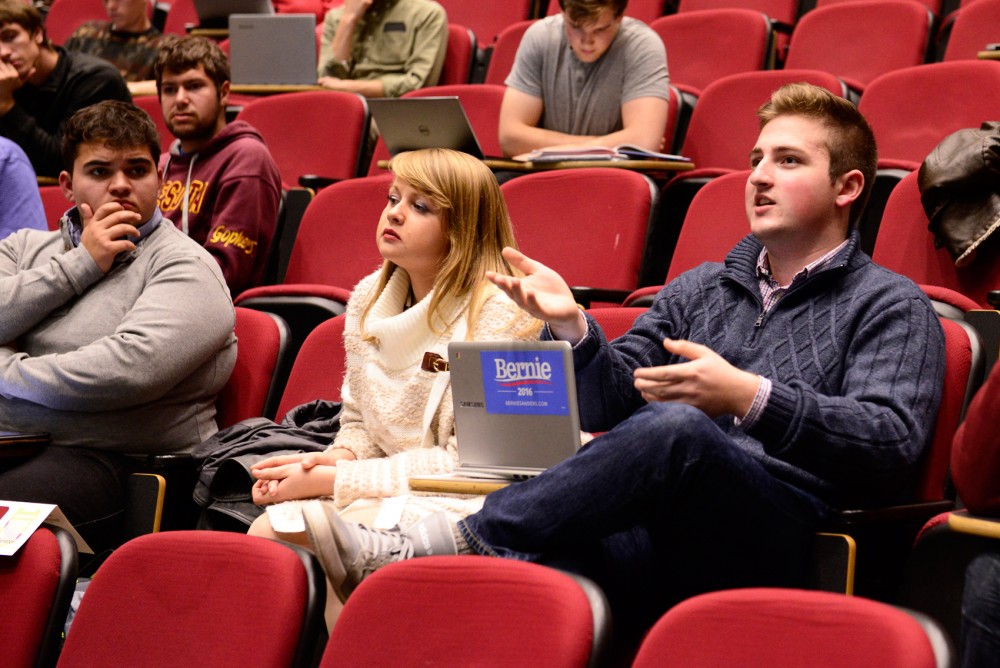The Minnesota Student Association passed a resolution supporting the implementation of a fall break last Tuesday.
The resolution asks for a one-day break in October to be implemented “effective immediately.” If approved next by the University Senate Educational Policy Committee, other University Senate committees will then have to approve it for a vote in the Faculty Senate.
“The rationale for fall break is that students don’t really have a break in the midst of midterms,” said Makda Biniam, the resolution’s primary author and MSA vice presidential candidate. “Implementing some sort of break in the month of October allows students the ability to regroup and basically get ahead.”
For over two years, student government at the University of Minnesota has pushed to add a fall break, but turnover and concerns over implementation have stalled efforts.
Because the academic calendar requires 70 instructional days, the resolution is open to breaks on a year-by-year basis. If Labor Day falls later in the calendar, some years it will not be possible to include a one-day break, said Bob McMaster, dean of undergraduate education.
While the resolution language calls for it to be “effective immediately,” McMaster said that might be challenging.
“It would be very unlikely for this to happen in fall [2018], that’s just too close,” he said.
The break has academic benefits and mental health benefits for students, Biniam said.
She said a comparison of grades shows spring GPAs range from .05 to .09 points higher than in the fall.
Although he likes the idea of an added break, McMaster said several challenges exist to implementing the break. He said the University has to wait until after Labor Day to start classes because of a parking contract with the Minnesota State Fair that allows visitor parking on the St. Paul campus throughout the fair.
Other issues include difficulties for professors to schedule classes, he said, and ensuring the University does not have final exams past Dec. 23.
Mental health
Mental health experts say an extra day off during the fall can lead to significantly reduced stress.
Additional sleep is one of the biggest benefits, said Ernesto Escoto, director of counseling and wellness at the University of Florida.
He said there is little academic research on the effectiveness of fall breaks, but he said other studies on sleep show that students would have benefits.
He said opportunities to rest help students retain information and improve concentration, among other benefits.
“Students these days are pushing themselves … [in ways] that I don’t remember doing,” he said. “They’re under a lot of stress — a little break here and there wouldn’t hurt.”
But, Escoto said he’s skeptical that a break would make a significant difference in fall semester GPAs.
At Brock University in Canada, the student government pushed successfully for a fall break, and the university conducted a study for the first three years of the break.
Madelyn Law, associate professor of applied health sciences at Brock University, helped conduct the research.
She said they interviewed students and found almost all students reported back positive mental health benefits. “The big one was that it was perceived to reduce their stress,” she said.
Senior students, who had no break in their freshman years, overwhelmingly agreed it was helpful, she said.
History
In 2015, an MSA petition supporting a fall break received over 2,700 signatures.
Previous pushes had suggested a week of online school or changing to a trimester calendar, said Claire Breitenstein, who pushed for a fall break in 2015.
McMaster said switching to a trimester would be highly expensive.
In an effort to finally get the resolution off the ground, Biniam said she focused the language on showing student support for the break. Other than specifying that the day fall in October and that it gets added as soon as possible, she said she left the logistics vague so that committees could then decide how they want to implement it.
“There’s always going to be challenges when you’re trying to make some changes to the structure of the University,” she said. “Showing that language that we are willing to compromise, I think that goes above all else.”
She and the academic affairs committee followed up on work MSA started a year ago, she said.
Max Hall, president of the Professional Student Government, signed on as a cosponsor to the MSA resolution. He said he’s heard of students pushing for this since he was an undergraduate student.
It is relatively low-impact on administration, he said, and has a high value for students’ mental health.
Although PSG has not addressed this in their meetings, he said they will likely approach a similar measure later this semester.
“It makes it a lot easier on the administration when all of the student governments work together and can provide that consistent voice.”








